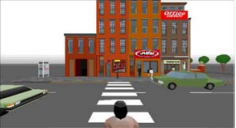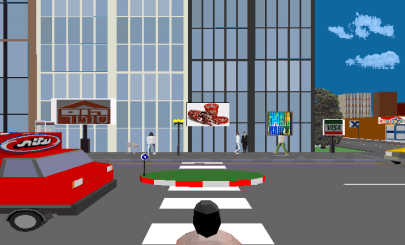Science News: Study Suggests Virtual Reality Teaches Autistic Children Street Crossing
By Associated Press ScienceDaily
Recent research conducted at the University of Haifa found that children with autism improved their road safety skills after practicing with a unique virtual reality system. "Children with autism rarely have opportunities to experience or to learn to cope with day-to- day situations. Using virtual simulations such as the one used in this research enables them to acquire skills that will make it possible for them to become independent," said Profs. Josman and Weiss, from the Department of Occupational Therapy at the University of Haifa.
The independence of children with autism depends on their receiving treatment in natural settings. One of the main problems they face is their inability to learn how to safely cross the street, a necessary skill for independent living. While acquiring this skill could greatly improve these children's independence, most of the methods for teaching street-crossing have been designed for use within the classroom, and they have been shown as insufficiently effective among autistic children.
The best way to teach children with autism skills is through repeated practice in natural settings, but the danger of learning to cross the street in a natural setting obviously prohibits this method. This is where virtual reality is very effective, as demonstrated by the research team which included Hadass Milika Ben-Chaim, then a student in the Occupational Therapy master's program and Shula Friedrich, the principal of the Haifa Ofer School for Children with Autism as well as Profs. Josman and Weiss.
Six autistic children, ages 7-12, spent one month learning how to cross virtual streets, to wait for the virtual light at the crosswalk to change and to look left and right for virtual cars using a simulation programmed by Yuval Naveh. The children in the study showed substantial improvement throughout the learning process: at the beginning of the study, the average child was able to use the 2nd level of the software while by the end they mastered the 9th level, which is characterized by more vehicles traveling at a higher speed.
However, the research team was not looking to teach a virtual skill; they wanted to see if the children were able to transfer the skills they had mastered in a virtual environment to the real world. A local practice area with a street and crosswalk, complete with traffic signals, was used for this purpose. The children's ability to cross the street safely was tested in this area evaluating, for example, whether they stopped to wait on the sidewalk or waited for a green light before crossing. The children were brought to the practice area before and after their virtual learning. Here too, the children exhibited an improvement in their skills, following the training on the virtual street, with three of the children showing considerable improvement.








